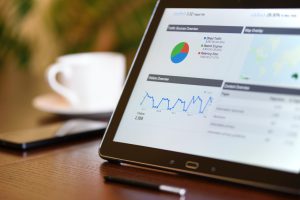The temptation to form premature theories upon insufficient data is the bane of our profession.Sherlock Holmes
Transactional data, demographic data, nominal data, binary data, time-stamped data, Short-term data, long term data; how far can we extend this list and data sorts and types? But, the challenge isn’t sorting it; it is about analyzing it and drawing out some useful insight out of it. So, a data platform for different aims at collecting a particular data is an inevitable need. Plus, according to Forbes, Two-thirds of companies compete based on customer experience, which means we need a customer data platform explicitly.
Customer Data Platform (CDP) Benefits
Technically speaking, A Customer Data Platform (CDP) is a software ledger that composes and arranges data from multiple sources by an all-around tool in order to create a versatile yet centralized customer database containing data on all touch-points and interactions with your production or service.
To be more explicit, customer data platforms are designed to be beautifully simple, and is used by many of the world largest organizations to provide support to their customers. As a matter of fact, it’s a platform-as-a-Service (PaaS) product, having an ability in harmonizing different sources of data, can be of a great deal more intelligential help to hack the growth of your business.
Nonetheless, and however, like any other X-as-a-Service, your organization will pay a monthly fee for every registered member of your support team using the product; correspondingly, it will take care of the hosting for you, as well as the other logistics of running a complex website, which allows you to focus on the important tasks—such as providing great uphold to your customers.
Regardless, democratizing data is a very momentous byproduct of using such platforms. Simply because, data democratization is the path of making digital accessibility to the average non-technical user of information systems without having to require the involvement in information technology.
A stiffened decision-making platform is the one which was provided by a democratic accessibility to big data, sort of gathered, matched, classified and cleaned and knit data in large scales. Surprisingly, this important goal is about to be settled at the mercy of customer data platform (CDP).
The platform provides enterprises with a surrounding that can ensure state-of-the-art, precise, and perfect view of customers to help them make to-the-point decisions. Moreover, according to IBM, approximately 70% of leaders’ time is spent to find data while only 30% of time is spent on analyzing it. So, a good data platform can save a great deal of time in terms of collecting, and vice versa, you earn a fair amount of time to put in your extracted insights.
Punctual tools are the next benefit. About 47% of data, collected by businesses, has one or more major errors. Conversely, the data dug up with CDP, owing to the fact that the P-as-a-Service is run under qualified standards, provides100% error-free information, notwithstanding the fact that it gathers multi-sourcing.
Social media plug-ins are the other advantage of the CDP. The platform has integrated its user management system in such a way that permits users to log in using social media business accounts, if and only if this is enabled by an administrator.

What are the Common Features of Customer Data Platform (CDP)?
IBM data scientists divide big data into 4 different dimensions which are called 4Vs: volume, variety, velocity and veracity. Regardless of it, we should know more about common features of Customer Data Platform (CDP) if we need to choose the best one for our enterprise.
One of the best features of any enterprise plan is the ability to configure agent permissions at a more granular level than the Starter, Regular or Plus plans. But, identity resolution is another characteristic which is rather functional if it is run through a good CDP.
Combining profiles and associated data points from multiple platforms and systems into a single customer record is the main role of this specific feature.
Hybridity is a very critical feature here in terms of collecting and gathering phase. Hybrid Cloud is a combination of public and private ones, generically to usher a single IT solution between the two.
As a matter of fact, multi-cloud entails multiple cloud services, be laddered on one or more providers, for example AWS for application workloads and Microsoft Azure for enterprise database, is what we call hybridity of a CDP. Not only has it been participated in the way that the platform gathers and combines, it has also shown its innermost core of procession.
Synchronous data feed is the other attribute we would like to address as an important feature in this regard. It is a live window to stock and derivatives exchanges for professional and retail investors, and a cost-effective measure that can provide its users a high return on investment.
Overall, to recapitulate the features in short, take a look at the following list:
- Access to different data types;
- Multi-cloud and hybrid data sources;
- Basic Extract, Transform, Load (ETL);
- Integration of web data and IoT data as data sources;
- Data refresh and synchronization;
- Real-time data feeds.
Requests for all of these features are on the radar of our team in the Dataigest product management leadership.
Customer Data Platform (CDP) VS CRM
To be honest, CDPs are a developed reversion of CRMs, ornately tuned for the high-scale, real-time and synchronous requirements of the cutting-edge new B2C marketers.
They are a natural extension of different sorts of measures Salesforce has been constructing for businesses in all sizes and with multi-sided activities. In other words, customer data platforms (CDP) have enabled marketers to gain a centralized insight of a customer across online (digital transactions) and offline communications.
As both CRMs and CDPs scoop up bundles of customer data, the largest difference between them is that CRMs organize and manage customer-facing interactions with your team, while CDPs scoop up data based on customer behaviors while utilizing your product or services.
CDP VS MDP
Hastily, for a start, MDP is a means and a set of disciplines, designed to evolve organization-spectrums of data, particularly in large scales and big enterprises, while a CDP is a set of processes, as a software product with a focused purpose to deliver a rather straightforward gaze of the customer experience that the marketing department can use to improve customer experience.
Simply speaking, MDP elicits data from a bunch of different, potentially irrelevant sources and enables organizations to intensify specific audience engagement segments to which they can allow distinct marketing outcomes.
Final Words
Needless to say, change is inevitable. And, big data is as necessary as water in most industries nowadays, and enterprises precisely know they need to build core capabilities to exploit and leverage it. The latest BCG Data Maturity Assessment Survey (DACAMA) shows that, overall, companies are evolving and becoming more mature in their data potentials.
Nevertheless, some companies are growing much faster and are going complex. In addition, many offices still have high aspirations for data evolution. So, customer data platform, with all its advantages is one thing in this regard. According to Bonaparte, war is 90% information.



